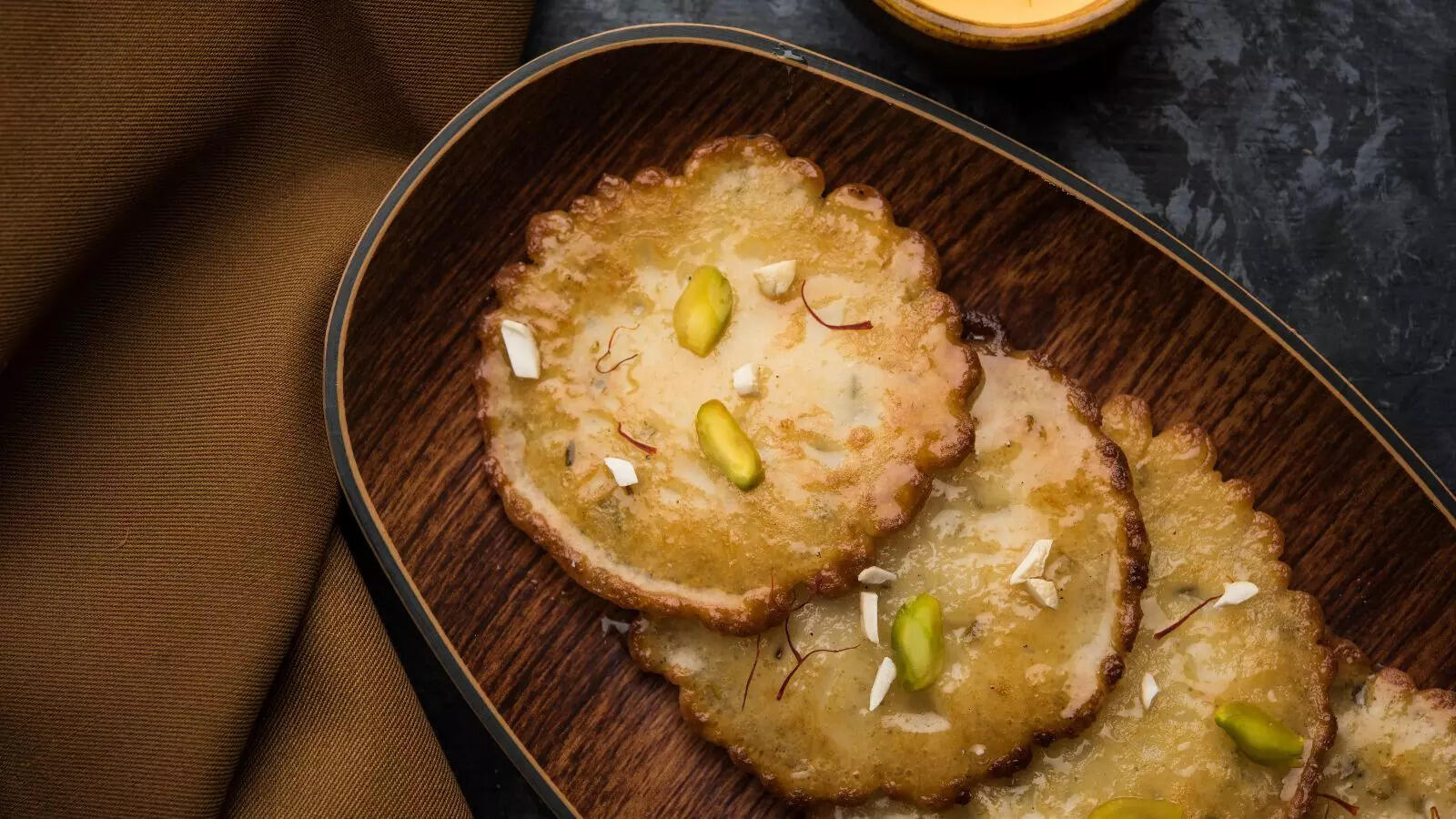Move Beyond Gulab Jamun This Diwali 2025 And Explore Rare Indian Sweets
Diwali, the festival of lights, brings with it joy, family get-togethers, small pujas, and the tradition of sharing sweets. Beyond the familiar gulab jamun and laddoos, many Indian households prepare unique regional delicacies that often remain unknown outside their communities. These traditional treats carry cultural stories, family memories and deep festive value.
Here’s a look at some lesser-known sweets enjoyed during Diwali and other celebrations across India:
Nokul Dana and Batasha
These classic sugar confections are often served as prasad during Durga Puja, Kali Puja and Saraswati Puja. Nokul Dana are tiny opaque sugar balls placed on puja thalis, while batasha are small disc-shaped sweets made from sugar or jaggery. Children especially love them, as they are offered after rituals.
Rajasthani Malpua
Distinct from its Bengali cousin, this version is thick, pale and rich in flavour. Made with paneer, cornflour, fennel, nutmeg, saffron, sugar and ghee, the malpua is soaked in syrup and topped with almonds and pistachios for a festive finish.
East Bengal Halwa for Shab-e-Barat
In East Bengal, Shab-e-Barat is marked with breads and an array of halwas. Ingredients range from carrots, chana dal and gourds to flour and arrowroot. Dimer halwa stands out, made from eggs, ghee, sugar, evaporated milk, saffron, cinnamon, cardamom and dry fruits, cooked slowly to achieve a grainy texture.
Egg-based Barfi
Chitrita Banerji’s documentation of a Bengali egg barfi reveals a mix of whipped egg whites, yolks, ghee and sugar, flavoured with saffron or rosewater. Once cooked and set, it is cut into diamonds, an unusual twist on a classic mithai.
Parsi Favourites
The Parsi community offers delicacies like khaman na ladoo (cornflour dumplings with coconut, almonds and raisins), kopra pak (coconut fudge), varadh vara (semolina cakes) and audh, made using coconut milk. Another festive dish is Parsi Sev, vermicelli cooked in sweetened milk with rosewater, cardamom, nutmeg and dry fruits.
Bohri and Cross-Cultural Sweets
The Bohri malai na khaja is a layered fried pastry soaked in syrup, reminiscent of baklava and believed to have Iranian origins. Malido, another rich sweet, uses grains, eggs, dried fruits and nuts cooked slowly to a fudge-like consistency.
Parsi Baked Custard
This version of baked custard is flavoured with rosewater, cardamom, nutmeg and topped with almonds. Often likened to caramel custard, it blends British culinary roots with Indian warmth.
From modaks and pedas of Ganesh Chaturthi to Rajasthan’s winter Doodhiya Kheench or gram-flour based Dilkhusar/Mohanthal, Indian sweets are as varied as its cultures. This Diwali, celebrate by rediscovering these forgotten flavours and sharing them with loved ones.

Here’s a look at some lesser-known sweets enjoyed during Diwali and other celebrations across India:
Nokul Dana and Batasha
These classic sugar confections are often served as prasad during Durga Puja, Kali Puja and Saraswati Puja. Nokul Dana are tiny opaque sugar balls placed on puja thalis, while batasha are small disc-shaped sweets made from sugar or jaggery. Children especially love them, as they are offered after rituals.
Rajasthani Malpua
Distinct from its Bengali cousin, this version is thick, pale and rich in flavour. Made with paneer, cornflour, fennel, nutmeg, saffron, sugar and ghee, the malpua is soaked in syrup and topped with almonds and pistachios for a festive finish.
East Bengal Halwa for Shab-e-Barat
In East Bengal, Shab-e-Barat is marked with breads and an array of halwas. Ingredients range from carrots, chana dal and gourds to flour and arrowroot. Dimer halwa stands out, made from eggs, ghee, sugar, evaporated milk, saffron, cinnamon, cardamom and dry fruits, cooked slowly to achieve a grainy texture.
Egg-based Barfi
Chitrita Banerji’s documentation of a Bengali egg barfi reveals a mix of whipped egg whites, yolks, ghee and sugar, flavoured with saffron or rosewater. Once cooked and set, it is cut into diamonds, an unusual twist on a classic mithai.
Parsi Favourites
The Parsi community offers delicacies like khaman na ladoo (cornflour dumplings with coconut, almonds and raisins), kopra pak (coconut fudge), varadh vara (semolina cakes) and audh, made using coconut milk. Another festive dish is Parsi Sev, vermicelli cooked in sweetened milk with rosewater, cardamom, nutmeg and dry fruits.
Bohri and Cross-Cultural Sweets
The Bohri malai na khaja is a layered fried pastry soaked in syrup, reminiscent of baklava and believed to have Iranian origins. Malido, another rich sweet, uses grains, eggs, dried fruits and nuts cooked slowly to a fudge-like consistency.
Parsi Baked Custard
This version of baked custard is flavoured with rosewater, cardamom, nutmeg and topped with almonds. Often likened to caramel custard, it blends British culinary roots with Indian warmth.
From modaks and pedas of Ganesh Chaturthi to Rajasthan’s winter Doodhiya Kheench or gram-flour based Dilkhusar/Mohanthal, Indian sweets are as varied as its cultures. This Diwali, celebrate by rediscovering these forgotten flavours and sharing them with loved ones.
Next Story